Should High Handicappers Get Fitted Clubs? The Benefits Apply to All

High handicap golfers have to deal with a lot of advice.
Whether that advice comes from a pro or simply from ‘well-intentioned’ playing partners high handicappers are often bombarded with hints and tips.
And one of the main subjects of this advice in recent times has been around custom fitting and whether it’s worth it for high handicappers to get fitted golf clubs.
So should high handicappers get fitted clubs or not?
Custom fitted golf clubs can benefit every standard of golfer and particularly high handicappers. High handicappers are very inconsistent ball strikers and fitted clubs both increase the chances of hitting the ball out of the centre of the clubface and maximizing how far and straight mishits go.
While it seems clear that it is a misconception to think high handicappers cannot benefit from getting fitted clubs it is vital that any high handicapped player has their eyes wide open before getting custom fitted for clubs.
Because as with every question when it comes to golf it’s never as simple as a straight yes or no answer for every player.
The Benefits of Fitted Golf Clubs Apply to High Handicappers
When it comes to the subject of fitted golf clubs high handicappers will very often hear the following – “You are not a good enough golfer for a custom golf club fitting to matter.”
But when you look at the benefits of getting fitted golf clubs does that statement actually stack up?
The key aim and benefit of a custom golf club fitting is to make sure you have clubs in your hand that ‘fit your physical dimensions, your strength, your stance and the way you swing’.
This in turn will then increase the chances of you finding the centre of the clubface and maximizing how far and straight your mishits go.
In other words a custom fitting is aiming to tell you which clubs will help you the most when things don’t go quite right rather than when they do.
And what category of golfers are some of the most inconsistent ball strikers in the game of golf?
High handicappers.
So a process which aims to make sure your clubs are the right length, have the correct shaft, the best lie angle for your height and the best grip for your hands is clearly going to be beneficial to all golfers regardless of playing ability.
Whether you walk out of a custom fitting with nothing or an entirely new set of clubs the process will also undoubtedly give you a better understanding of your golf swing.
The launch monitor which is used throughout any good fitting process will analyze every shot you take during the fitting and provide you with a load of data comparing how you hit the ball with different models of clubs and shafts.
Whether you are numbers nerd or not such information, especially when interpreted to you by an experienced fitter, will provide you with some invaluable insight into your swing and what you could potentially do to improve it.
High handicappers therefore benefit equally – if not more so – than low handicap golfers. After all the players hitting it the most inconsistently needs all the advantage they can get!
That in itself does not necessarily mean every high handicapper ‘should’ get fitted clubs but it’s important we are clear from the outset that a custom golf club fitting can benefit every standard of player.
Be Aware High Handicappers May Need More Than One Fitting
Any question which involves the word ‘should’ or considers whether something is ‘worth it’ must involve the consideration of cost.
So if you are a high handicapper and considering whether you ‘should’ get fitted golf clubs we are really asking whether the results – and don’t forget the time and effort also – are worth the money?
And when it comes to a golf club fitting it’s vital that every golfer, high handicapper or not, is clear that it is often not the cost of the golf club fitting itself which is the main cost of the process.
This is because even though a golf club fitting for your driver for example can be as little as $50 (£30) you could end walking out being recommended to buy a driver worth hundreds of dollars after a custom fitting session.
Regular clubs can be costly enough but if you find yourself going through the options of shafts, club heads, grips etc during a fitting you must bear in mind that these can potentially add significant costs to the final price of whatever you are buying.
Some driver shafts for example can easily add an additional $200-$300 (£150-£200) onto the standard price of a driver.
And you can easily double the costs of your irons if you go for specialists shafts.
Poor custom fitters can also make high handicappers in particular feel pressured to spend alot of money.
A good fitter however will confirm your budget in advance to make sure you don’t end up looking at options that will be out of your price range.
Another ‘cost caveat’ that high handicappers need to bear in mind is that if you are serious about improving, and do manage to get your handicap down to a much lower number, you may end up having to get fitted again further on down the line much quicker than a low handicapped player.
This is simply because if you are making major improvements your golf swing will also probably change significantly as you get better.
As a result the clubs that suited your swing when you were a high handicapper will potentially not be the best ones for you when you are a better player.
The good news though there are ways to keep costs down when it comes to golf club fitting, and at Golfing Focus one of our main priorities is always to ensure players don’t waste money and maximise any investment they make into their golf.
For example lots of club fitters run free ‘fitting’ days at local clubs or driving ranges to let you go and test the process out.
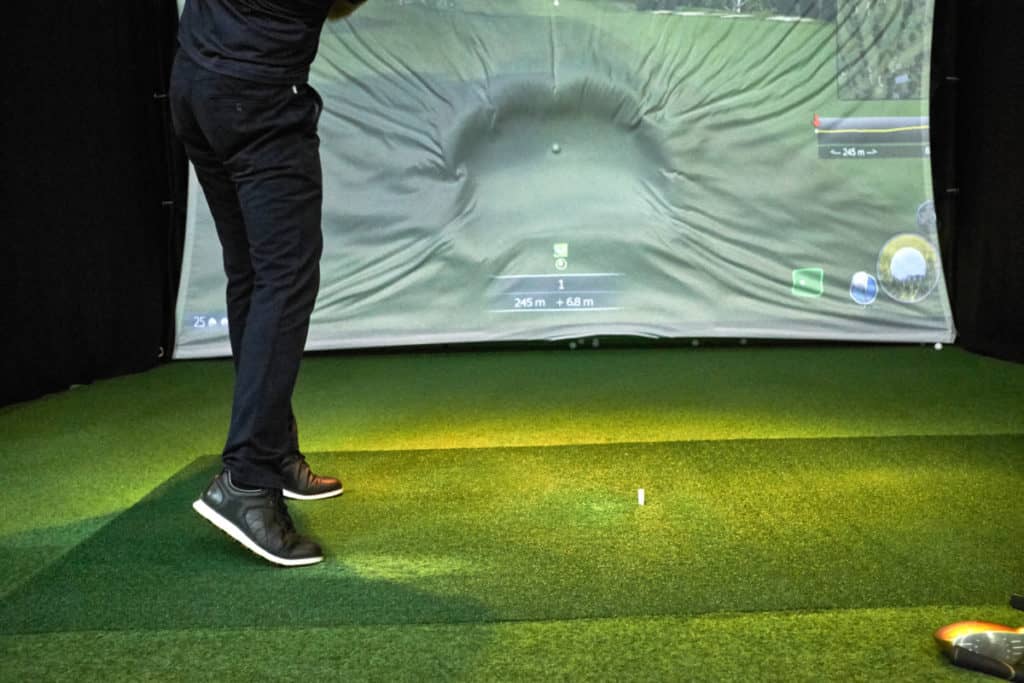
So if you keep an eye out for these free sessions you could easily go and get to see what your stats are from the fitting process.
And remember you don’t have to buy anything at this point.
So you could simply take the numbers you get from the fitting away and work yourself, or with your instructor, to try and improve them by the time you go back to a second free fitting session.
Based on what your numbers were the second time you could then take a more considered view of whether that club, shaft, grip etc change which is recommended is necessary.
Some custom fitters also offer a refund of any custom fitting fee against any purchase of new equipment.
And if you have gone to a good fitter they will tell you if your current clubs are just fine which can give you a great boost of confidence.
The prevailing opinion however for high handicappers is that you should wait until your swing has become relatively consistent, and you are comfortable with it before you embark on any potentially expensive golf club fitting process.
And further if you have money to spend you are better spending it on lessons first to help you improve.
But for every player that swears a golf club fitting helps them knock a few shots off their handicap there is another who will say it’s a waste time.
The main point is a golf club fitting can undoubtedly benefit a high handicap player and the only question therefore to consider is how serious you are about improving.
If you are high handicapper who is serious about your golf, and think spending money on a custom fitting will help more than spending your money elsewhere, what’s the problem?
Just make sure you go into the process with your eyes open and are clear there are other ways to improve which can be equally beneficial and not so costly.
How Do High Handicappers Get Fitted Clubs?
If you are a high handicapper and do decide to get fitted for golf clubs the next question is how do you about getting fitted.
To help on this we’ve listed below five common places you can go for a custom fitting:
- Club professional – if you are a member of a golf club the first place to consider is your PGA club professional. Different golf clubs and pros will have different facilities available and potentially have link ups with specific manufacturers but it’s the obvious place to consider if you are thinking of getting a custom fitting done.
- Golf retailers – Another option for a golf fitting is with a golf retailer. These superstores typically have lots of makes, models and options for you to try and test.
- Independent club fitters – A third option is to head along to a independent fitter who will specialise in custom fitting golf clubs. These specialists – including Club Champion and True Spec Golf in the US and Custom Lab Golf in the UK – typically focus exclusively on golf club fitting services and therefore often utilise the latest technology.
- Manufacturer Fitting Centres – If you’re fixated on a particular brand of clubs and can’t see a way past them you could always head straight to the source and go to one of the manufacturers main performance institutes or national fitting centres.
- Demo days – To ensure awareness of all their clubs and ensure as much access as possible for golfers the leading club manufacturers will frequently send representatives to golf clubs throughout the country to demonstrate their latest range of clubs and offer you the chance to test them out.
[Note – We recently put together a complete guide on the best places to get fitted for golf clubs in the US, Canada and the UK to help you find a putter fitting venue near you. Check it out here!]
Whatever fitting venue you decide on though it is vital that you make sure you are getting a proper service.
To help with this we’ve listed a few guidelines below which you should consider:
- Make sure you get the FULL process – A good club fitting should follow a process approximately similar to this – interview, static measurements of you from head to toe, dynamic fitting using technology including a launch monitor and of course a final recommendation. A fitting for one club or category of clubs (e.g. driver) will typically take between 45 minutes to 1 hour while a full bag fitting can take up to 2 1/2 hours so there can be a lot to take in.
- Check they have a ‘head’ fitter – if they tell you everyone in the store is a qualified fitter make sure they are potentially not no more than sales staff. Good custom fitting venues will have a ‘head fitter’.
- Confirm how many fitting options they have – they should have hundreds if not thousands of models and options for you to test.
- Ask your buddies / check reviews – Have any of your golfing buddies had a really good experience with a fitter or are their legitimate reviews from other golfers which demonstrate their fitting lead to actual improvements in their game?
Of all of the above the top focus should be on the fitter themselves.
Just like choosing the best golf teacher for you when it comes to lessons it’s important that you find the fitter who you can interact with the best to get the best result.
The good fitters will be talking to you all the way along asking for feedback whilst they also make some decisions themselves based on their observations.
Any fitter can look at the launch monitor and parrot back the numbers to you but a well skilled club fitter will tap into their knowledge and interpret them in the best way for you.
And if they think that the clubs you have are good for you they will say so rather than try and sell you something you don’t need.
The bottom line is that the quality of fitting you get is always dependent on the fitter analysing the results and interpreting them correctly for your swing.
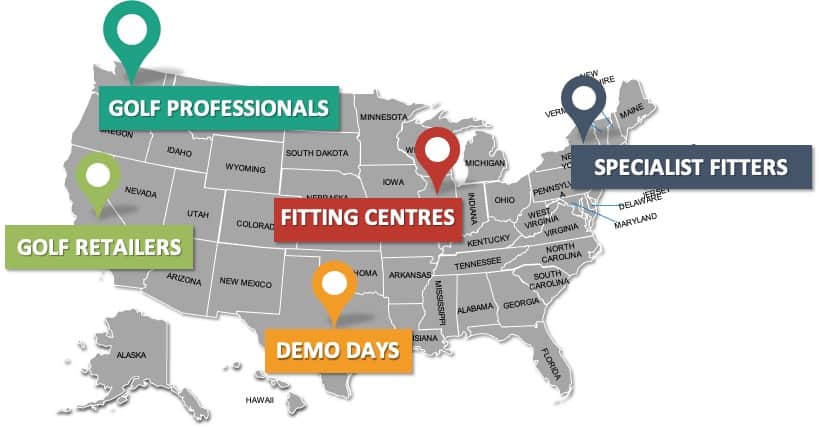
High Handicappers Can Improve With or Without Custom Fitted Clubs
When it comes to golf there are a myriad of tools which can help you improve.
Custom club fitting is simply one of those tools and you should simply look on it as such when you come to deciding on whether it should make up part of your game improvement plan or not.
For example both golf lessons and custom golf club fitting share the same goal and that is to enable you to hit the ball better every shot.
Fitted clubs simply aim to increase your chances of hitting the ball out of the centre of the clubface, irrespective of your ability.
Golf lessons meanwhile aim to increase your ability so it is entirely the personal preference of every golfer whether they want to spend their money on neither, one or both to assist them getting better.
The odds are as a high handicapper you will be best simply picking the most forgiving clubs you can get to play with and then upgrading elements of your clubs as your game improves.
In addition, if you are not playing fairly regularly, or if you are not that bothered about getting better, it’s very doubtful a custom fitting will be worth the money.
But that does not mean a golf club fitting is not an option for a high handicapped player if they think that’s the tool they want to choose and spend their hard-earned money on in order to try and eek out some improvements.
A golf club fitting is a process that can benefit any standard of player, and although they cannot be guaranteed to be successful or cure a swing fault, it’s simply up to you to decide whether that includes you at the moment.
More great articles related to this topic
- How Much Does a Golf Club Fitting Cost? Is it Worth it?
- Can You Get Your Existing Golf Clubs Custom Fitted? Complexity = Cost
- Is a Putter Fitting Worth it? It Removes a Variable or Three
- Should I Get Fitted for Golf Clubs Before Lessons? Get Both Together
- How Often Should You Get Fitted for Clubs? Use the 3 Tests
- Best Places to Get Fitted for Golf Clubs – A Complete Guide
- Should a Beginner Get Golfer Fitted for Clubs? Focus On Enjoyment
- How Long Should a Club Fitting Take? Take Your Time!
- Are My Golf Clubs Too Old? It’s Performance Not Age That Matters
RECENT ARTICLES
LEGAL INFORMATION
This site is owned and operated by Golfing Focus Limited, a private limited company whose registered office is in London, UK. Golfing Focus Limited is a participant in the Amazon Services LLC Associates Program, an affiliate advertising program designed to provide a means for sites to earn advertising fees (at no cost to you) by linking to Amazon.com. Golfing Focus Limited also participates in other affiliate programs with the eBay Partner Network, FlexOffers, CJ.com, Svorn and other sites and is compensated for referring traffic and business to these companies (again at no cost to you).
Our Socials

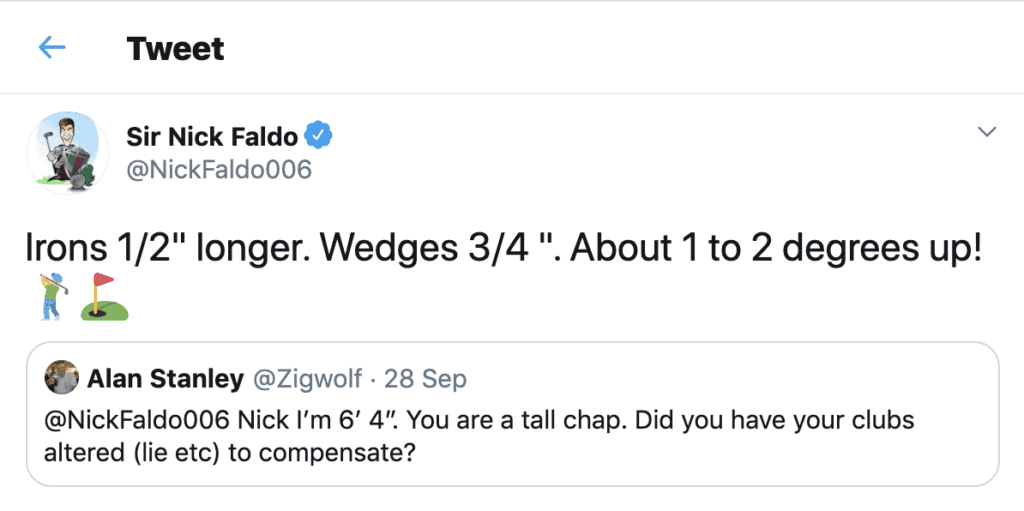
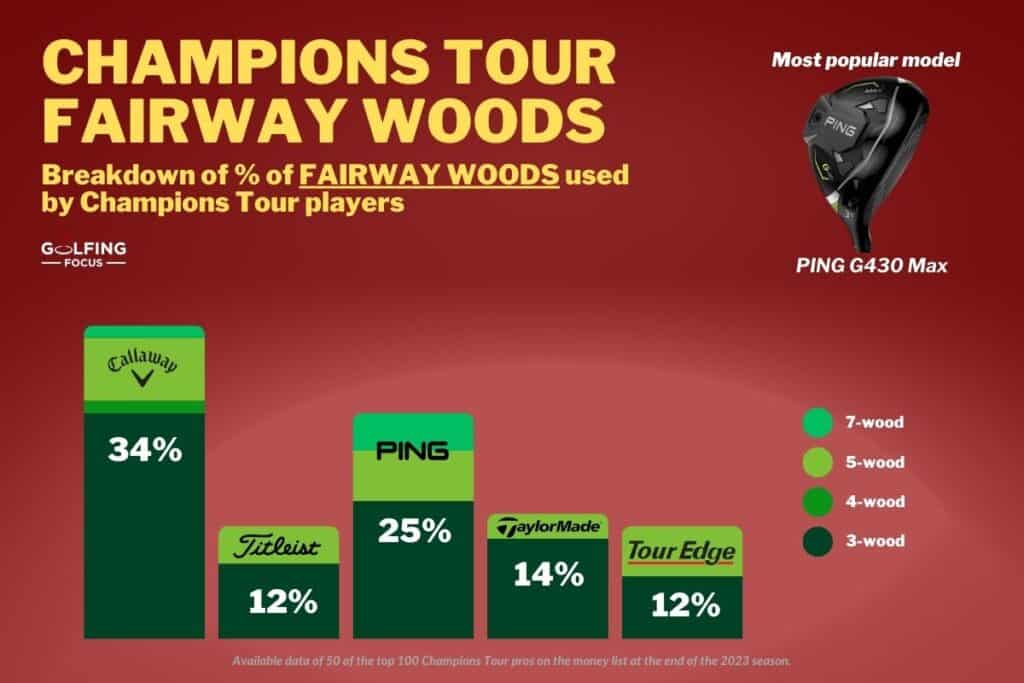
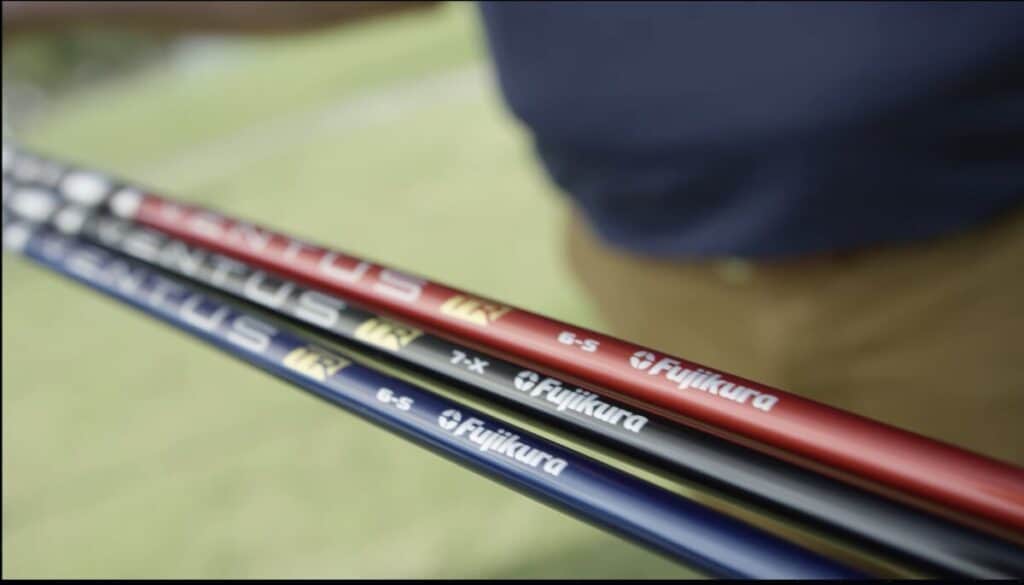
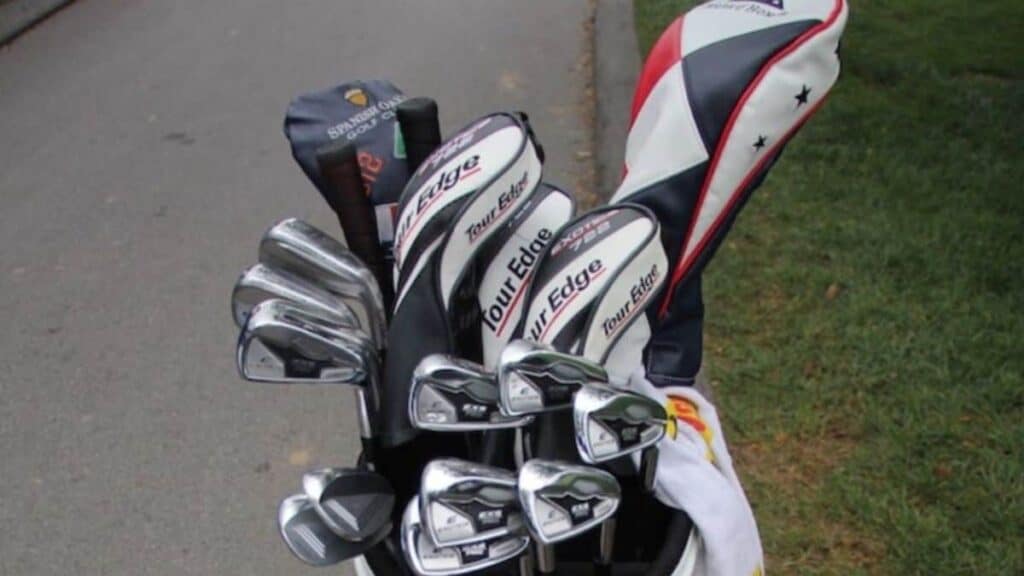
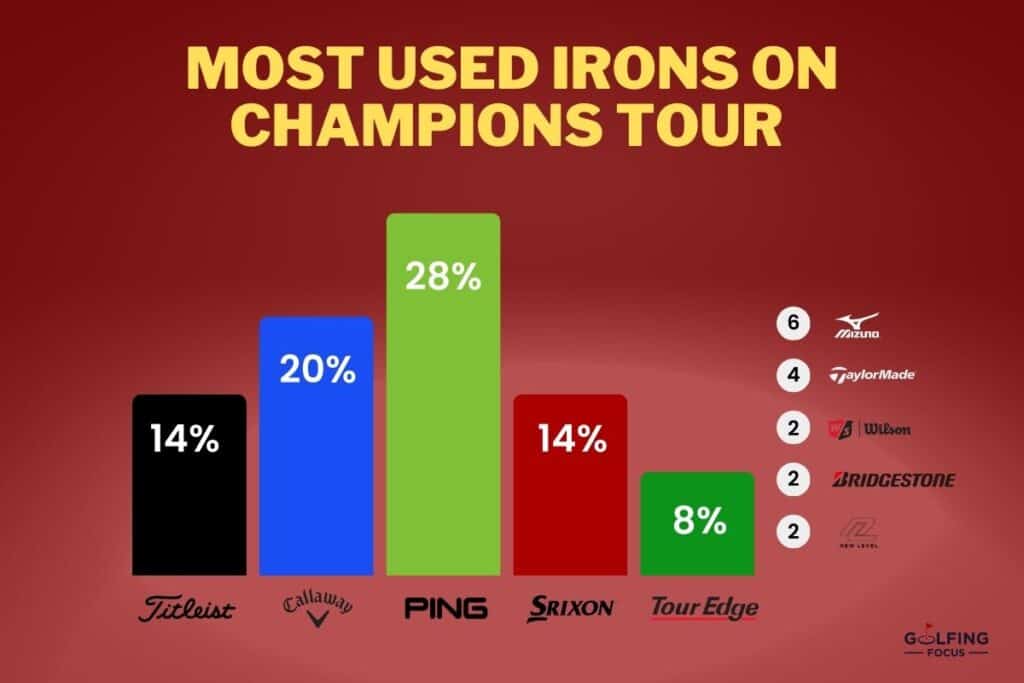

Leave a Reply